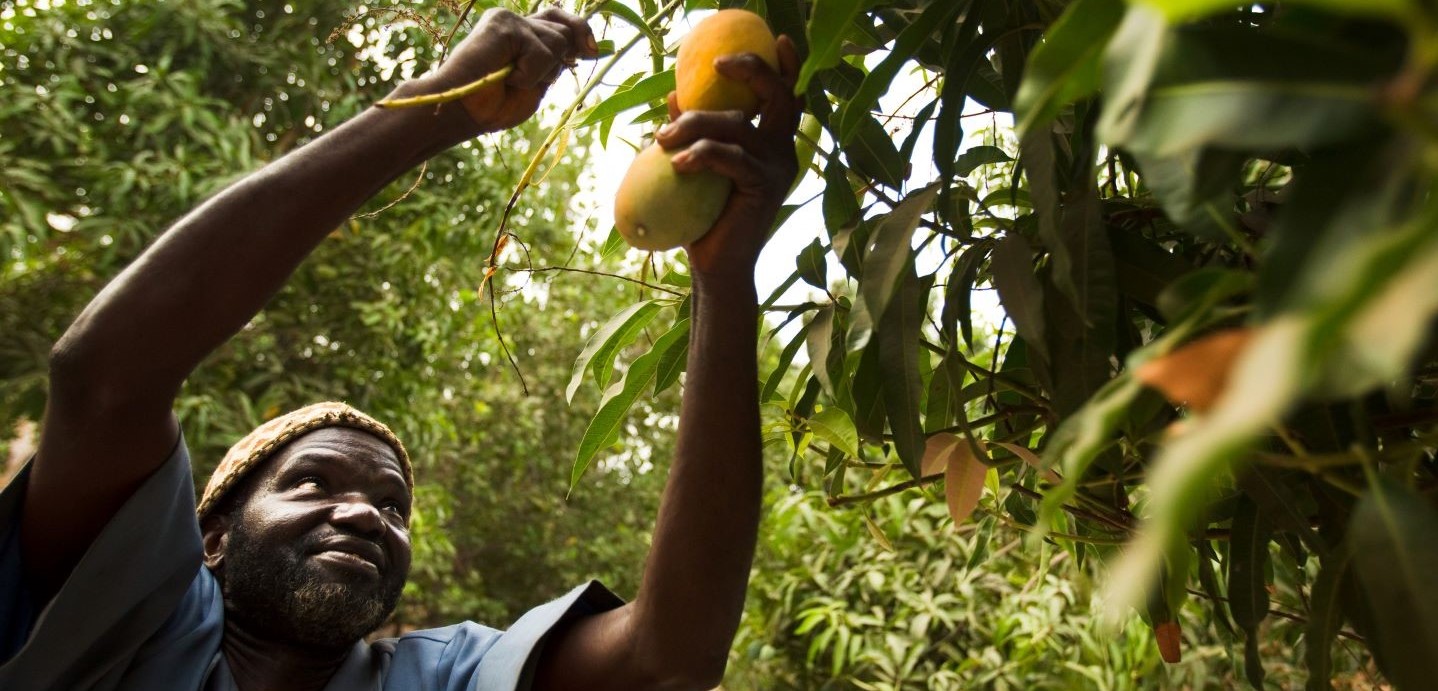What are nature-based solutions? Your questions answered
IFAD Asset Request Portlet
Asset Publisher
What are nature-based solutions? Your questions answered
Estimated reading time: 3 minutes
It's time to help the most vulnerable people adapt to the changing climate. These are the rural farmers, fishers, herders and small-scale producers in developing countries who are already experiencing the effects of climate change.
The best way forward, we think, is through nature-based solutions (NbS). But what are NbS, and why do we think they’re so great? We’re here to answer your questions about this useful approach.
So, what are nature-based solutions anyway?
Until recently, the climate, biodiversity, and even human and social well-being were treated as separate issues needing separate solutions.
NbS, by contrast, take a holistic approach, treating all of them as part of the same system.
When the components of a system are treated separately, action on one might have negative impacts on another. For example, you could plant thousands of trees to sequester carbon, but if they’re all the same species, biodiversity is lost.
An NbS approach takes into account both the positive and negative impacts of interventions. It chooses the ones that have co-benefits across the whole system, without negative effects in other parts.
What’s so great about nature-based solutions?
NbS allow us to work with nature, using ecosystem functions that protect biodiversity, sequester carbon, and enable climate adaptation – and have other social benefits too.
The International Union for the Conservation of Nature (IUCN) defines NbS as “actions to protect, sustainably manage and restore natural or modified ecosystems that address societal challenges effectively and adaptively, simultaneously providing human well-being and biodiversity benefits.”
NbS can be designed to address many different challenges, such as climate change, food security, water security, human health, disaster risks, and social and economic development.
Sudan’s Butana region, for example, is very vulnerable to drought. An IFAD-supported initiative in the region created a governance framework that helps communities collectively protect shared forests and sustainably manage land and water resources, all while resolving land disputes, including those where outside interests were involved. This not only protected the delicate Sahelian ecosystem, it reduced conflicts over land access, increased resilience to drought, and was calculated to store 4.7 million tonnes of carbon dioxide over 20 years.
Why should countries adopt nature-based solutions?
Through NbS, countries can help small-scale farmers build their livelihoods while adapting to climate change. This promotes rural prosperity, enables people to make a decent living where they are instead of looking elsewhere, and strengthens local food systems.
NbS can also help countries manage threatened natural resources, such as water, land and soil. They can help turn the tide on biodiversity loss and provide nutritious and diverse diets.
So, NbS are an investment in a country’s present and future economy and society, with the potential to create healthier environments and healthier populations.
They also have immense potential to sequester carbon and to help countries make their nationally determined climate change contributions under the Paris Accords.
For instance, one IFAD-supported pasture restoration initiative in Kyrgyzstan sequesters 0.5 tonnes of carbon dioxide per hectare annually. This might sound insignificant – until you consider that nearly half the country’s entire land area is pastureland.
But how do we know what makes a good nature-based solution?
In 2020, the IUCN developed a global standard laying out the ingredients for a successful NbS. A good NbS is:
- effective in addressing societal challenges
- designed in a way that understands human and environmental interactions in and around the targeted land- or seascape
- a creator of net gains for biodiversity and ecosystem integrity
- economically viable
- based on inclusive, transparent and empowering governance processes
- able to balance trade-offs between its primary goals and other benefits
- managed adaptively, based on evidence – including both scientific and local, indigenous or traditional sources of knowledge
- sustainable in the long term and supported by policy frameworks.
How does IFAD use nature-based solutions in its work?
IFAD has long recognized the potential of NbS. In fact, we’ve had such positive experiences that we now plan to invest 30 per cent of our climate finance in NbS by 2030. Meanwhile, we’re already incorporating them into many of our programmes worldwide.
Our pioneering ASAP programme, for example, recognizes rural-dwellers not just as beneficiaries, but as participants in protecting, managing or restoring their ecosystems. To date, ASAP has channelled US$300 million to over 5 million farmers in 41 countries.
In The Gambia, IFAD-supported mangrove restoration is creating cooler microclimates while sequestering over 100,000 megatonnes of carbon dioxide over the next two decades.
In Nicaragua, IFAD-supported tree planting is improving soil health, retaining groundwater and sequestering 2.7 tonnes of carbon dioxide per hectare per year.
Meanwhile, ASAP’s successor programme, ASAP+, was launched in 2021, aiming to mobilize US$500 million and benefit over 10 million people. We envision it as the largest fund dedicated to channelling climate finance to small-scale producers. And of course, NbS are among the main pillars of ASAP+.
Publication date: 27 October 2021